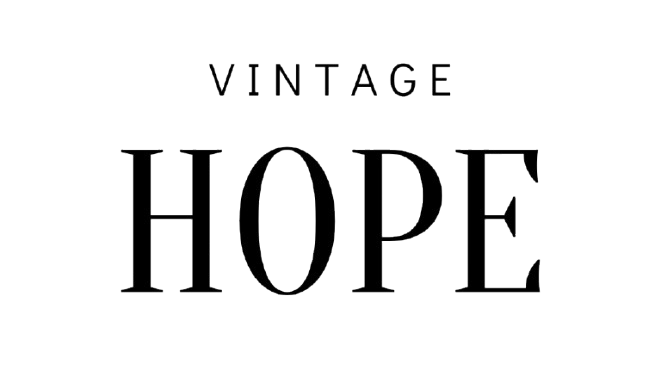As awareness around environmental issues and the impact of fast fashion grows, many people are turning to vintage shopping not only for unique style but also for its sustainability benefits. Vintage fashion offers a powerful way to build an eco-friendly wardrobe without sacrificing style, quality, or individuality. Here’s a look at how vintage shopping contributes to a more sustainable fashion industry and the positive impact it has on our planet.
1. Reducing Waste and Pollution
The fashion industry is one of the world’s largest polluters, responsible for massive textile waste and water pollution. When you buy vintage, you’re choosing to reuse items that might otherwise end up in a landfill. By giving pre-loved clothing a second life, you help reduce the demand for new production and lower the amount of waste generated by the fashion industry. This small shift in buying habits has a ripple effect: the more people buy vintage, the less we need to produce, which directly reduces pollution and waste.
2. Lowering Demand for Fast Fashion
Fast fashion is built on the rapid turnaround of inexpensive, low-quality items that wear out quickly and are then discarded. This model drives a culture of disposability, encouraging people to buy more than they need. When you shop vintage, you’re investing in quality pieces that are meant to last, which shifts demand away from fast fashion and encourages a more mindful approach to consumption. Vintage shopping helps promote a culture that values longevity and reduces the need for cheap, mass-produced clothing.
3. Reducing the Use of Natural Resources
The production of new clothing requires significant natural resources, from water and energy to raw materials like cotton and polyester. The process of creating a single cotton T-shirt, for example, uses up to 2,700 liters of water. By choosing vintage items, you’re effectively conserving these resources since no new materials are required to produce the clothes. Every vintage purchase saves water, energy, and raw materials, making it a small but impactful step toward more sustainable living.
4. Promoting Ethical Fashion Choices
Vintage shopping offers an ethical alternative to new clothing production, especially in an industry often associated with poor labor practices. Many vintage pieces come from a time when clothing was produced with higher standards, both in terms of craftsmanship and labor conditions. By purchasing vintage items, you’re supporting an ethical fashion choice and reducing reliance on modern production cycles that may exploit workers in low-wage countries.
5. Supporting the Circular Economy
The circular economy is a sustainable alternative to the traditional “take-make-dispose” model. In a circular economy, resources are kept in use for as long as possible, minimizing waste and promoting reuse. Vintage shopping fits perfectly within this framework by extending the life cycle of clothing and accessories. When you buy vintage, you’re participating in a circular economy where items are continually reused and repurposed, creating a more sustainable fashion ecosystem.
6. Encouraging Conscious Consumption
In a world dominated by fast fashion, vintage shopping is a form of conscious consumption. Vintage pieces often come with a story, a unique design, or an artistic quality that sets them apart from mass-produced clothing. This encourages people to buy less but buy better, focusing on items that add true value to their wardrobe. Vintage shopping promotes a thoughtful approach to fashion, where each purchase is a deliberate choice rather than an impulse buy.
7. Fostering Individuality and Personal Style
Sustainable fashion doesn’t mean sacrificing style. In fact, vintage shopping allows you to build a wardrobe that reflects your individuality and celebrates unique trends from past decades. By mixing and matching eras, you can create a personal style that’s distinct and timeless. This focus on individuality also aligns with sustainability because it encourages you to choose pieces that truly resonate with you and are likely to stay in your wardrobe for years.
8. Quality and Longevity
One of the key reasons vintage items have stood the test of time is their quality. Older garments are often made with durable materials and superior craftsmanship, which is not as common in today’s fast fashion. When you buy vintage, you’re investing in pieces that are made to last, reducing the need to replace items frequently. This longevity means fewer resources are used over time, further supporting a sustainable lifestyle.
9. Inspiring the Future of Fashion
Finally, vintage shopping is inspiring the future of sustainable fashion by promoting the idea of upcycling and reimagining older styles in new ways. Many designers now look to vintage fashion for inspiration, recognizing the value of reworking past trends for a modern audience. As vintage becomes more popular, it helps shift the fashion industry toward sustainable practices, encouraging brands to prioritize quality, durability, and timeless design.
Vintage shopping is more than just a trend; it’s a meaningful way to embrace sustainable fashion while celebrating the past. By choosing vintage, you’re not only reducing your environmental impact but also supporting a culture that values ethical production, quality craftsmanship, and individuality. Each vintage piece you buy helps create a more sustainable fashion industry and contributes to a healthier planet. So next time you’re shopping, consider the impact of your purchase and discover the lasting charm and sustainability of vintage fashion.

Hi, this is a comment.
To get started with moderating, editing, and deleting comments, please visit the Comments screen in the dashboard.
Commenter avatars come from Gravatar.